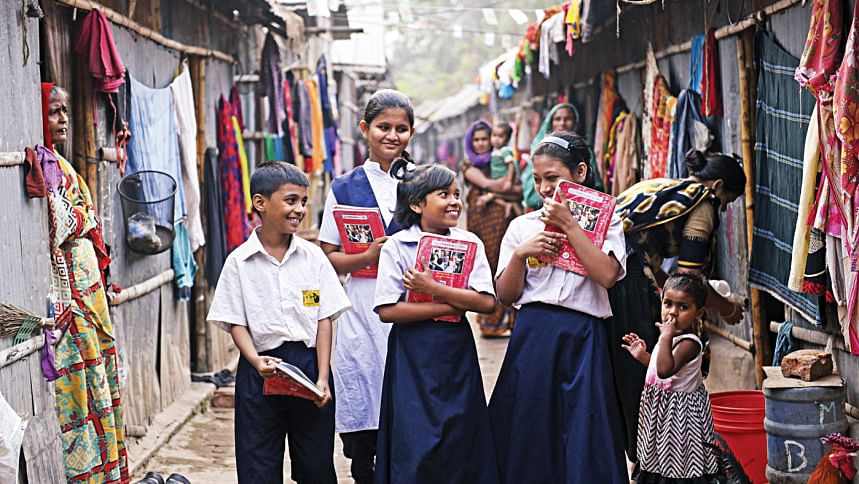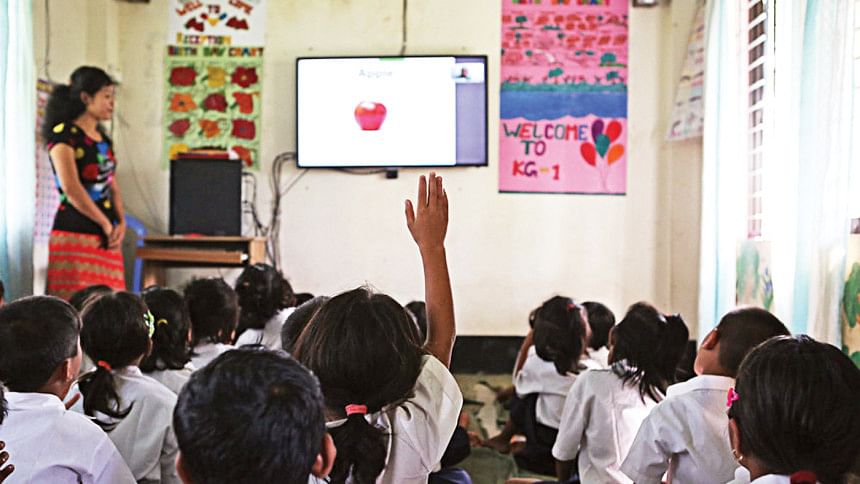Digital classrooms: Transforming education for marginalised communities

In an increasingly interconnected world, education remains the most powerful tool to break the cycle of poverty and inequality. However, for marginalised communities, access to quality education often remains a distant dream. The advent of digital classrooms is rapidly altering this landscape, bridging the gap between privilege and disadvantage. At the Jaago Foundation, we have witnessed firsthand how technology can transform lives, offering opportunities to those who might otherwise be left behind.
Since its inception in 2007, Jaago Foundation has been committed to providing quality education to underprivileged children in Bangladesh. Recognising the limitations posed by geography, socio-economic barriers, and a shortage of qualified teachers in remote areas, we launched our Digital School Program in 2011. This initiative was born out of necessity, driven by the belief that every child, regardless of their background, deserves access to quality education. Our digital classrooms connect trained educators from urban centres with students in remote, underserved communities using video conferencing technology and interactive digital tools. This approach not only addresses the scarcity of qualified teachers in rural areas but also ensures that students receive a consistent, high-quality education aligned with national standards.
The impact of digital classrooms on marginalised communities is profound. In regions where traditional schools are few and far between, digital platforms eliminate the barriers of distance and infrastructure. Students who once walked miles to attend makeshift classrooms now access lessons from the safety and comfort of local learning centres equipped with basic digital infrastructure. The flexibility offered by digital education also allows for personalised learning, enabling students to progress at their own pace—a critical factor for those who may need to balance education with work or family responsibilities.
Beyond accessibility, digital classrooms foster inclusivity. For children with disabilities, traditional classrooms often lack the resources and infrastructure needed to support their learning effectively. Digital education, however, offers adaptable tools and technologies—such as screen readers, captioning, and customised learning software—that cater to diverse needs, making education truly inclusive. Moreover, digital classrooms can help break down gender barriers in education. In conservative communities where girls face cultural restrictions on attending school, online learning offers a discreet, flexible alternative, empowering them to pursue their education without compromising cultural norms.

Globally, several initiatives mirror the successes and challenges we've encountered. In India, the government's "Diksha" platform provides e-learning content tailored to different state curricula, supporting millions of students and teachers. The platform includes interactive lessons, assessments, and resources accessible even on low-bandwidth networks, making it particularly effective in rural areas. In Kenya, the 'BRCK' initiative has introduced rugged, solar-powered tablets in rural schools, ensuring that children in off-grid areas remain connected to the wider world of knowledge. Similarly, in Australia, community-wide Wi-Fi projects in remote Aboriginal communities have transformed not just education but also healthcare and economic opportunities, showcasing the ripple effect of digital connectivity.
However, the success of digital classrooms hinges on more than just technology. Effective teacher training is paramount. At Jaago, we invest heavily in equipping our educators with the skills needed to navigate digital platforms and create engaging, interactive lessons. Teachers are trained not only in the technical aspects of e-learning but also in new pedagogical approaches that foster critical thinking, creativity, and collaboration—skills essential for the 21st-century learner. We've found that continuous professional development, combined with peer support networks, significantly enhances the effectiveness of digital teaching, ensuring that educators feel confident and supported in their roles.
Another critical factor is community engagement. Introducing digital education in marginalised areas often requires overcoming cultural and social barriers. In many cases, families are unfamiliar with or even sceptical of technology's role in education. To address this, we work closely with local leaders, parents, and students to build trust and demonstrate the tangible benefits of digital learning. This community-centric approach has been instrumental in increasing enrolment rates and reducing dropout rates in our digital schools. We've also initiated parent engagement programmes, where parents are introduced to the digital tools their children use, fostering a supportive learning environment at home.
Yet, despite these successes, challenges persist. The digital divide remains a significant hurdle, particularly in regions with unreliable internet connectivity and limited access to devices. The Covid-19 pandemic exposed and exacerbated these disparities worldwide, highlighting the urgent need for comprehensive digital infrastructure. In Bangladesh, while urban areas quickly adapted to online learning during lockdowns, many rural students were left behind due to a lack of connectivity and digital literacy. Even when devices are available, issues like power outages, lack of technical support, and limited digital skills among students and teachers can hinder the learning process.
Addressing these challenges requires robust policy interventions. Governments must prioritise investments in digital infrastructure, particularly in rural and remote areas. Public-private partnerships can play a crucial role in expanding internet access and providing affordable devices to students. Moreover, integrating digital literacy into school curricula from an early age will ensure that students are not just passive consumers of technology but active, informed participants in the digital economy. Policymakers should also consider establishing digital education hubs in underserved areas—community centres equipped with reliable internet, devices, and trained facilitators—ensuring that even the most disadvantaged students have a place to learn.
Sustainability is another key consideration. Our experience has shown that leveraging renewable energy sources, such as solar power, can make digital classrooms viable even in off-grid communities. This not only reduces operational costs but also aligns with global efforts to combat climate change. Our pilot projects using solar-powered digital classrooms have demonstrated that sustainable solutions are not just environmentally responsible but also economically feasible. Additionally, adopting eco-friendly practices in digital education—such as promoting e-books over printed materials and using energy-efficient devices—can contribute to broader sustainability goals.
Furthermore, the role of data and analytics in enhancing digital education cannot be understated. Digital platforms offer the ability to track student progress in real-time, providing educators with valuable insights into learning patterns, strengths, and areas needing improvement. This data-driven approach allows for targeted interventions, personalised learning plans, and continuous improvement of teaching methodologies.
The future of education lies in its ability to adapt and evolve. Digital classrooms are not a panacea, but they represent a powerful tool in the fight against educational inequality. By embracing technology, we can create more inclusive, resilient education systems that reach every child, no matter where they are. Our own journey is a testament to this transformative potential. From a single classroom in Dhaka to a network of digital schools across Bangladesh, we have seen how technology can turn aspirations into achievements.
The future of education lies in its ability to adapt and evolve. Digital classrooms are not a panacea, but they represent a powerful tool in the fight against educational inequality. By embracing technology, we can create more inclusive.
As we look to the future, it is clear that the digital revolution in education must be driven by a commitment to equity and inclusion. Policymakers, educators, and communities must work together to ensure that no child is left behind in the digital age. The lessons we've learned at Jaago, coupled with best practices from around the world, offer a roadmap for harnessing the full potential of digital classrooms. By investing in infrastructure, training, and community engagement, we can create an educational landscape where every child has the opportunity to learn, grow, and thrive. This is not just about technology; it's about unlocking human potential and building a more just, equitable world for future generations.
Korvi Rakshand is the founder of Jaago Foundation, a non-profit organisation that empowers underprivileged individuals and communities in Bangladesh through education, youth development, women's empowerment, climate change, governance, and poverty alleviation.

 For all latest news, follow The Daily Star's Google News channel.
For all latest news, follow The Daily Star's Google News channel. 



Comments